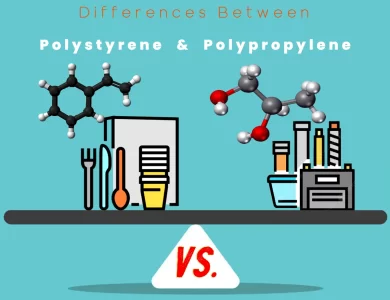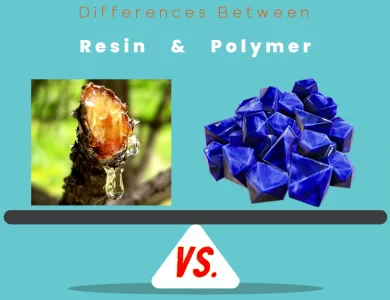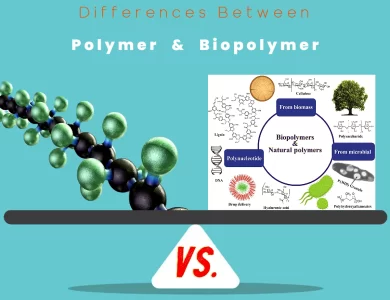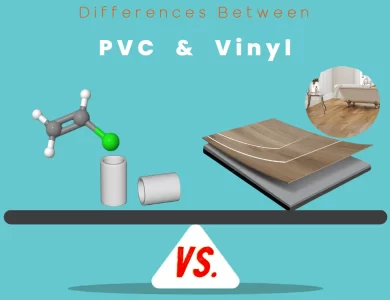
| Property | Polycarbonate | Plastic |
|---|---|---|
| Chemical Composition | Repeating carbonates from BPA | Various polymers depending on type |
| Transparency | High | Varies depending on type |
| Strength and Durability | Exceptional; highly impact-resistant | Varies widely; from low to high |
| Density (g/cm³) | 1.2 – 1.22 | Varies based on the type of plastic |
| Heat Resistance (Tg) | Around 145 – 150°C (293 – 302°F) | Varies based on plastic type and additives |
| Chemical Resistance | Good; resists acids and bases | Varies depending on the type |
| Electrical Insulation | Excellent | Varies; some plastics have good insulation |
| Flammability | Moderate; self-extinguishing | Varies; can be flame retardant with additives |
| Cost | Relatively high | Varies; can be cost-effective |
| Environmental Impact | Recyclable; concerns over BPA usage | Varies; efforts to develop sustainable alternatives |
In the realm of materials, the choices seem endless, and the decision-making process can often feel like navigating a labyrinth. But fret not, for we’re here to shed light on a fundamental choice you’ll encounter time and again – Polycarbonate or Plastic. These two versatile materials play starring roles in a multitude of applications, from eyewear to aerospace, and the decision of which to embrace hinges on an intricate dance of properties, costs, and environmental considerations.
Differences Between Polycarbonate and Plastic
The main differences between Polycarbonate and Plastic lie in their chemical composition, transparency, strength, and environmental impact. Polycarbonate, characterized by its high transparency and exceptional strength, is derived from repeating carbonates and offers excellent impact resistance, making it suitable for applications like safety equipment and optical lenses. On the other hand, Plastic encompasses a broad category of materials with varying compositions, resulting in differences in transparency, strength, and resistance to heat and chemicals. The choice between the two materials depends on specific project requirements, budget constraints, and sustainability goals, with Polycarbonate excelling in applications where clarity and durability are paramount, while Plastic offers cost-effective solutions for a wide range of needs.
Composition
Polycarbonate Composition:
Polycarbonate, often referred to as PC, is a high-performance thermoplastic polymer known for its exceptional strength and transparency. Its chemical structure consists of repeating units called carbonates. Polycarbonate is typically produced through the polymerization of bisphenol A (BPA) and phosgene. This unique combination results in a material with outstanding optical clarity and mechanical properties.
| Property | Polycarbonate |
|---|---|
| Chemical Formula | (C16H14O3)n |
| Composition | Carbonates derived from BPA |
| Transparency | High |
| Strength | Exceptional |
| Density | 1.2 – 1.22 g/cm³ |
Plastic Composition:
The term “plastic” is a broad category encompassing a vast range of synthetic polymers. Plastics are typically composed of long chains of polymers, but the specific composition can vary widely depending on the type of plastic. Common plastics include polyethylene (PE), polypropylene (PP), polyvinyl chloride (PVC), and many others, each with its own chemical structure and properties.
| Property | Common Plastics |
|---|---|
| Chemical Formula | Varies based on plastic type |
| Composition | Different polymers |
| Transparency | Varies depending on type |
| Strength | Range from low to high |
| Density | Varies based on plastic type |
Transparency: Seeing Clearly Through the Differences
Polycarbonate Transparency:
Polycarbonate stands out for its remarkable transparency. It allows approximately 90% of visible light to pass through, making it an ideal choice for applications where optical clarity is crucial. This clarity, coupled with its high impact resistance, has led to its widespread use in eyewear lenses, optical discs, and even bulletproof glass.
Plastic Transparency:
The transparency of plastics varies significantly depending on the type of plastic. While some plastics like polyethylene are inherently translucent or opaque, others like polyethylene terephthalate (PET) can be quite transparent. However, plastic’s transparency tends to be lower compared to polycarbonate, and it often requires additional treatments or additives to enhance clarity. This makes plastics less suitable for applications that demand optical precision.
Strength and Durability: A Battle of Materials
Polycarbonate Strength and Durability:
Polycarbonate is renowned for its exceptional strength and durability. It has high impact resistance, making it virtually unbreakable under normal conditions. This property is particularly valuable in applications where safety is a concern, such as in the production of safety helmets, riot shields, and aircraft windows. Additionally, polycarbonate is resistant to shattering, making it a safer alternative to glass.
Plastic Strength and Durability:
The strength and durability of plastics vary widely depending on the type. While some plastics like high-density polyethylene (HDPE) are known for their toughness and resistance to chemicals, others may be relatively brittle. Plastics generally have lower impact resistance compared to polycarbonate, which limits their use in applications that require resistance to physical stress and impacts.
Density: Weighing the Options
Polycarbonate Density:
Polycarbonate has a moderate density, typically ranging from 1.2 to 1.22 grams per cubic centimeter (g/cm³). This places it in the mid-range of densities for plastics. While it’s not as lightweight as some plastics, it strikes a balance between strength and weight, making it suitable for various applications without being overly heavy.
Plastic Density:
The density of plastics varies significantly depending on the type. For instance, low-density polyethylene (LDPE) has a low density of around 0.91 g/cm³, making it lightweight, while high-density polyethylene (HDPE) has a density of approximately 0.95 g/cm³. Some specialty plastics can have much higher densities. The choice of plastic should consider the specific application’s weight requirements.
Heat Resistance: Facing the Heat Head-On
Polycarbonate Heat Resistance:
Polycarbonate exhibits good heat resistance, with a glass transition temperature (Tg) typically ranging from 145 to 150°C (293 to 302°F). This property allows it to withstand relatively high temperatures without deformation or softening. However, prolonged exposure to temperatures above its Tg can lead to dimensional instability.
Plastic Heat Resistance:
The heat resistance of plastics varies based on their chemical composition. Some plastics, like polypropylene, have a relatively low heat resistance, while others, such as polytetrafluoroethylene (PTFE), can withstand extremely high temperatures. The choice of plastic should align with the specific temperature conditions the material will encounter in its intended application.
Chemical Resistance: Battling Harsh Environments
Polycarbonate Chemical Resistance:
Polycarbonate offers good resistance to a wide range of chemicals, including acids and bases. However, it may be susceptible to degradation in the presence of certain solvents and strong alkalis. Therefore, when considering polycarbonate for applications involving exposure to chemicals, it’s essential to assess its compatibility with the specific chemicals involved.
Plastic Chemical Resistance:
The chemical resistance of plastics varies significantly depending on the type. Some plastics, like polyethylene, are highly resistant to chemicals, while others, like polyvinyl chloride (PVC), may be susceptible to degradation in the presence of certain chemicals. The choice of plastic should be guided by the specific chemical environment in which it will be used.
Electrical Insulation: Shockingly Good or Bad?
Polycarbonate Electrical Insulation:
Polycarbonate possesses excellent electrical insulation properties. Its high dielectric strength and low electrical conductivity make it suitable for use in electrical and electronic applications. It is commonly used for electrical connectors, insulators, and printed circuit boards (PCBs).
Plastic Electrical Insulation:
Plastics can have varying electrical properties depending on their composition. Some plastics, like polyvinyl chloride (PVC), are known for their electrical insulating properties and are used in wiring and cable insulation. However, not all plastics offer the same level of electrical insulation, so the choice of material should align with the specific electrical requirements of the application.
Flammability: Keeping the Fire at Bay
Polycarbonate Flammability:
Polycarbonate has a moderate flammability rating. It is considered self-extinguishing, meaning it will stop burning once the ignition source is removed. However, it is not entirely fire-resistant and can release toxic fumes when exposed to high temperatures. Flame retardant additives can be incorporated into polycarbonate to enhance its fire resistance.
Plastic Flammability:
The flammability of plastics varies widely based on the type and additives used. Some plastics, like polyethylene, are highly flammable, while others, like polytetrafluoroethylene (PTFE), are highly resistant to ignition. Flame retardants are commonly added to plastics to improve their fire resistance, especially in applications where fire safety is critical.
Cost Considerations: The Price You Pay
Polycarbonate Cost:
Polycarbonate is generally more expensive than many common plastics due to its exceptional properties. The production process, which involves the use of BPA and phosgene, contributes to its higher cost. However, its durability and performance often justify the investment in applications where its unique properties are essential.
Plastic Cost:
The cost of plastics varies significantly depending on the type, with some plastics being relatively inexpensive. Plastics like polyethylene and polypropylene are often more cost-effective options for applications where specific performance characteristics of polycarbonate are not required. The choice of plastic can significantly impact the overall cost of a project.
Environmental Impact: The Sustainability Factor
Polycarbonate Environmental Impact:
Polycarbonate is a thermoplastic, which means it can be recycled. However, the recycling process can be complex due to the presence of additives and coatings on polycarbonate products, such as eyeglass lenses. Additionally, the production of polycarbonate involves the use of BPA, which has raised environmental and health concerns. As a result, there is a growing interest in developing more sustainable alternatives.
Plastic Environmental Impact:
Plastics have garnered significant attention for their environmental impact, particularly single-use plastics that contribute to pollution. While some plastics can be recycled, the recycling rates vary widely, and many end up in landfills or oceans. Efforts to reduce plastic waste and promote recycling have led to the development of biodegradable and bio-based plastics as more sustainable alternatives.
Polycarbonate Applications
1. Eyewear Lenses: One of the most well-known applications of polycarbonate is in eyewear lenses. Its high optical clarity, impact resistance, and lightweight nature make it a popular choice for eyeglasses, sunglasses, and safety goggles.
2. Optical Discs: Polycarbonate serves as the substrate for optical discs such as CDs, DVDs, and Blu-ray discs. Its transparency allows laser beams to read the data stored on the disc’s surface.
3. Safety Equipment: Due to its exceptional impact resistance, polycarbonate is widely used in safety equipment, including safety helmets, face shields, and riot shields.
4. Greenhouses: Polycarbonate’s transparency and moderate insulation properties make it an excellent choice for greenhouse panels. It allows sunlight to pass through while providing insulation to maintain a controlled environment for plants.
5. Aircraft Windows: In the aerospace industry, polycarbonate is used for aircraft windows. Its strength and transparency ensure the safety and visibility of passengers and crew.
Plastic Applications
1. Packaging: Plastics, particularly polyethylene and polypropylene, are extensively used in packaging materials such as bottles, containers, and plastic bags. Their versatility and cost-effectiveness make them staples in the packaging industry.
2. Plumbing and Pipes: PVC (polyvinyl chloride) is a commonly used plastic in plumbing systems. Its chemical resistance and ease of installation make it suitable for conveying water and other fluids.
3. Toys and Consumer Goods: Plastic toys, household items, and consumer goods are ubiquitous. Plastics like ABS (acrylonitrile butadiene styrene) are valued for their ease of molding and durability in these applications.
4. Automotive Components: Plastics play a vital role in modern automobiles, used in components such as dashboards, bumpers, and interior trim due to their lightweight and impact-resistant properties.
5. Medical Devices: Plastics are found in various medical devices, including syringes, IV bags, and prosthetic components, thanks to their biocompatibility and ease of sterilization.
Specialized Applications
In addition to these common applications, both polycarbonate and plastics have found their way into specialized industries and products:
Polycarbonate:
1. Bulletproof Glass: The high impact resistance of polycarbonate makes it a key component in bulletproof glass used in banks, security vehicles, and military applications.
2. Electronics: Polycarbonate is used in the production of electronic components, including printed circuit boards (PCBs) and housing for electronic devices due to its electrical insulation properties.
3. Medical Devices: It’s employed in medical equipment such as incubators and dental devices, where its transparency, strength, and sterilization capabilities are valuable.
Plastics:
1. 3D Printing: Plastics like PLA (polylactic acid) and ABS are popular materials in 3D printing due to their ease of extrusion and availability in various colors.
2. Food Packaging: Plastics with food-grade certifications are widely used for packaging food and beverages, providing protection and prolonging shelf life.
3. Textiles: Some plastics are converted into synthetic fibers used in textiles for clothing, upholstery, and even geotextiles for soil stabilization.
4. Agriculture: Plastics are employed in agriculture for applications like mulching films, irrigation pipes, and greenhouse coverings to improve crop yields and resource efficiency.
Polycarbonate or Plastic: Which One is Right Choose for You?
Choosing between polycarbonate and plastic can be a crucial decision, as it directly impacts the performance and characteristics of your project. To help you make the right choice, let’s delve into various scenarios and applications, outlining when each material is the optimal selection.
When to Choose Polycarbonate
- Optical Clarity is Essential: f your project requires exceptional optical clarity, such as for lenses, windows, or optical instruments, polycarbonate is the way to go. Its high transparency and minimal distortion make it ideal for applications where clear vision is paramount.
- Durability and Impact Resistance Matter: hen your project involves elements that need to withstand impacts, shocks, or rough handling, polycarbonate’s outstanding strength and resistance to shattering shine. Safety equipment like helmets, riot shields, or protective eyewear benefit greatly from its durability.
- Electrical Insulation is Required: In electrical or electronic applications where insulation is crucial, polycarbonate’s excellent electrical insulating properties make it a top choice. It’s commonly used for connectors, insulators, and printed circuit boards (PCBs).
- Heat Resistance Within Its Range: If your project operates within the temperature range that polycarbonate can handle (around 145 to 150°C or 293 to 302°F), it provides adequate heat resistance. This makes it suitable for a wide array of applications, from machine components to electrical enclosures.
When to Choose Plastic
- Budget Constraints Are a Concern: Plastics, especially common varieties like polyethylene and polypropylene, tend to be more budget-friendly than polycarbonate. If cost is a primary consideration and the application doesn’t require specific polycarbonate properties, plastic might be the better choice.
- Specific Chemical Resistance is Needed: Depending on the chemicals your project will encounter, certain plastics may offer better resistance than polycarbonate. Consider the chemical compatibility of the plastic with the substances it will come into contact with.
- Low Density is Preferred: For applications where reducing overall weight is crucial, opt for a plastic with a lower density. Plastics like polyethylene, with their lightweight nature, can significantly cut down on the weight of your project.
- Flame Resistance is a Priority: In projects where fire safety is paramount, plastics can be customized with flame retardant additives to enhance their fire resistance. Plastics like PVC are known for their flame-resistant properties.
- Environmental Sustainability Matters: If your project aligns with sustainability goals, explore biodegradable or bio-based plastics as more eco-friendly alternatives. Be sure to consider the disposal and recycling options for your chosen plastic.
Balancing Your Decision
In many cases, the choice between polycarbonate and plastic is a matter of finding the right balance between performance, cost, and environmental considerations. Here are some additional tips to aid your decision-making process:
- Evaluate Project Requirements: Carefully assess your project’s specific needs, including transparency, durability, heat resistance, and electrical properties.
- Consider Budget: Determine your budget constraints and weigh the added cost of polycarbonate against its advantages for your application.
- Assess Environmental Impact: If environmental sustainability is a concern, explore recycling options or more eco-friendly plastics.
- Consult Experts: Seek advice from materials experts or engineers who have experience with similar applications.
- Test and Prototype: Whenever possible, create prototypes or conduct tests to evaluate how each material performs in your application.
Ultimately, the right choice between polycarbonate and plastic depends on the unique characteristics and demands of your project. By carefully considering these factors and making an informed decision, you can ensure the success of your endeavor while optimizing cost, performance, and environmental impact.
FAQs
The primary difference lies in their chemical composition and properties. Polycarbonate is a specific type of plastic known for its exceptional strength and transparency, while “plastic” is a broad term encompassing a wide range of synthetic polymers with varying characteristics.
Polycarbonate is generally more transparent than most plastics. It allows approximately 90% of visible light to pass through, making it an excellent choice for applications where optical clarity is crucial.
No, they are not. Polycarbonate is known for its exceptional strength and impact resistance, making it virtually unbreakable under normal conditions. In contrast, the strength of plastics varies widely depending on the type, with some plastics being relatively brittle.
Polycarbonate does have good heat resistance, with a glass transition temperature (Tg) typically ranging from 145 to 150°C (293 to 302°F). However, the heat resistance of plastics varies based on their composition, and some plastics can withstand higher temperatures than Polycarbonate.
Polycarbonate is generally more expensive than many common plastics due to its exceptional properties and production process. Plastics like polyethylene and polypropylene are often more cost-effective options for applications where specific performance characteristics of Polycarbonate are not required.
Both Polycarbonate and plastics have environmental impacts. Polycarbonate is recyclable, but its production involves the use of BPA, which has raised environmental concerns. Plastics have varying levels of recyclability and environmental impact, with efforts ongoing to develop more sustainable alternatives within these material categories.
The choice depends on your project’s specific requirements. Choose Polycarbonate when optical clarity, durability, or electrical insulation is essential. Opt for Plastic when budget constraints, specific chemical resistance, low density, flame resistance, or environmental sustainability are higher priorities.
Read More:
Contents
- Differences Between Polycarbonate and Plastic
- Composition
- Transparency: Seeing Clearly Through the Differences
- Strength and Durability: A Battle of Materials
- Density: Weighing the Options
- Heat Resistance: Facing the Heat Head-On
- Chemical Resistance: Battling Harsh Environments
- Electrical Insulation: Shockingly Good or Bad?
- Flammability: Keeping the Fire at Bay
- Cost Considerations: The Price You Pay
- Environmental Impact: The Sustainability Factor
- Polycarbonate Applications
- Plastic Applications
- Specialized Applications
- Polycarbonate or Plastic: Which One is Right Choose for You?
- FAQs






